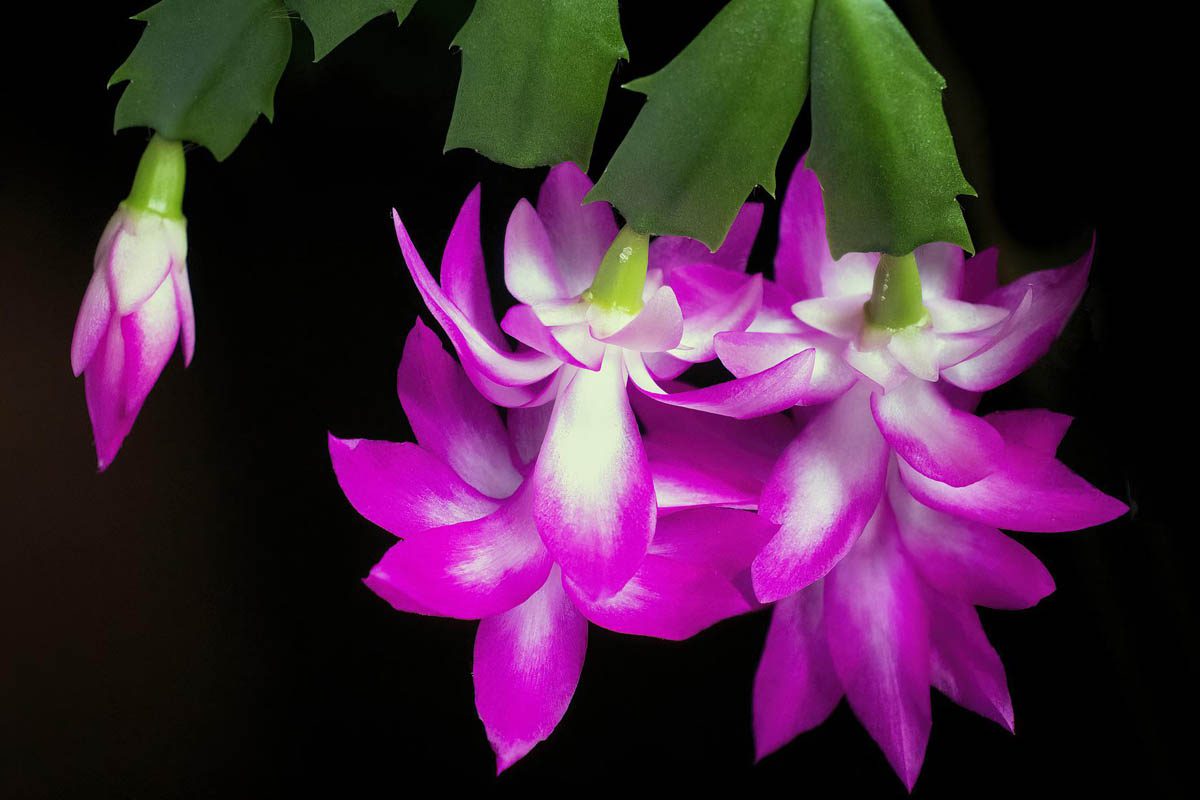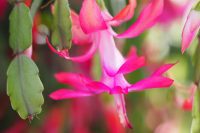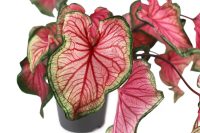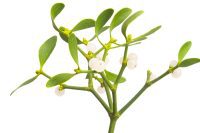Thanksgiving cactus is non-toxic to dogs. These popular Thanksgiving and holiday plants are safe to keep in homes with pets, but precautions must be taken when using fertilisers or pesticides on plants in homes with dogs as many are toxic.
What is Thanksgiving cactus?
| Family | Cactaceae |
| Botanical name | Schlumbergera truncata |
| Common names | Thanksgiving cactus, Holiday cactus, Crab cactus, Lobster cactus, Flor de Maio |
| Mature height | 30 cm (12 inches) |
| Flower colour |
Red, pink, orange, yellow, white |
| Leaf colour |
Green |
| Native to | South-eastern Brazil |
| Toxicity | Non-toxic to dogs |
Thanksgiving cactus is a flowering succulent native to south-eastern Brazil. These autumn flowering succulents commonly grown for its bright flowers that grow on the tips of pendant shoots made up of oblong and flattened segments. Flowers develop in late autumn, around Thanksgiving, hence the name. The blooms last approximately 7 weeks and grow in a range of colours including red, pink, orange (salmon), yellow and white.
In the wild, Thanksgiving cactus is epiphytic or epilithic, which means they grow in leaf debris on the clefts of tree branches or rocks, in areas with high humidity and shade. Cultivated Thanksgiving cactus can grow outside in tropical and subtropical climates, but is frost tender and should grow indoors in cooler climates.
Charles Lemaire named the Schlumbergera species in 1858, cacti collector Frédéric Schlumberger. Botanical collector and explorer Allan Cunningham introduced Schlumbergera truncata to Europe in 1818.
Related: Caring for a Christmas tree
What is the difference between Thanksgiving cactus and Christmas cactus?
Christmas cactus (Schlumbergera bridgesii) is also a member of the Schlumbergera genus, and also flowers late in the year. With a similar appearance, they are easy to confuse, but they do have differences.
| Thanksgiving cactus (Schlumbergera truncata) | Christmas cactus (Schlumbergera bridgesii) |
| Flowers in late autumn (Northern Hemisphere) | Blooms early winter (a month after Thanksgiving cactus) |
| 2-4 saw-toothed serrations along the leaf margins | Rounded serrations known as scallops along the leaf margins |
Julia is a writer and landscape consultant from Wollongong with a love of horticulture. She had been an avid gardener for over 30 years, collects rare variegated plants and is a home orchardist. Julia is passionate about learning and sharing her knowledge of plant propagation and plant toxicology. Whether it’s giving advice on landscape projects or sharing tips on growing, Julia enjoys helping people make their gardens flourish.




